West Indies history
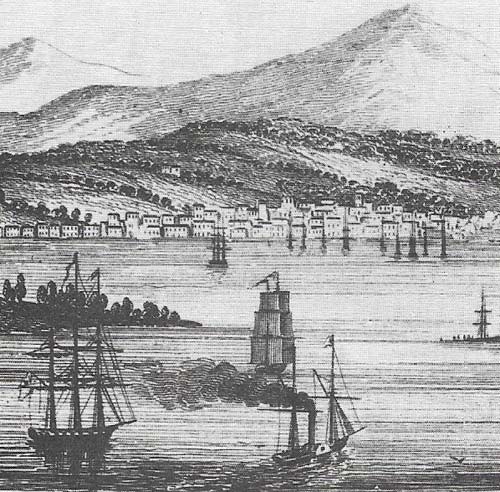
Figure 1. The British captured Jamaica with ease in 1655. Oliver Cromwell (1599–1658) had begun a policy of open aggression against Spanish possessions in the Caribbean for the first time since Drake. He first sent a force to attack Santo Domingo, capital of Hispaniola, but the expedition became a fiasco and ended in defeat. To atone for their crushing defeat the commanders decided to attack Jamaica, the most weakly garrisoned Spanish island. A week after they landed, a capitulation was signed. The Spanish troops retreated to the mountains and in alliance with the Maroons, bands of escaped slaves, kept up guerrilla warfare against the English until 1660.
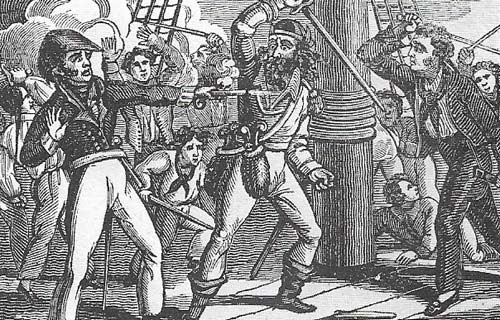
Figure 2. Pirates and buccaneers terrorized Caribbean shipping in the 17th century. Pirates preyed on any ship but buccaneers usually attacked only Spanish vessels. The buccaneers waged unofficial war even in peacetime, as well as enriching themselves, for England, France, and The Netherlands, who supplied their manpower. Henry Morgan (c. 1635–1688), one of the most notorious British buccaneers, looted and burnt Spanish-controlled Panama City in 1671. Three years later he was made Lieutenant-Governor of Jamaica. Around the year 1700 policies changed: the buccaneers were suppressed although piracy lingered on.
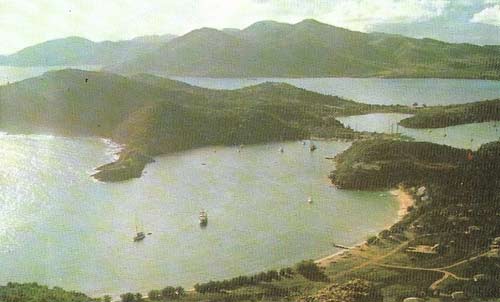
Figure 3. The English Harbour, Antigua, was the largest of the two English naval bases in the West Indies in the 18th century. With Port Royal, Jamaica, it provided an important base for repairs and taking on fresh supplies that the French fleet lacked. This proved a serious handicap in the many wars that England and France fought over the sugar islands and trade in the 18th century. Many islands changed hands several times and nearly all of them were attacked by raiding forces in the bitter fighting.
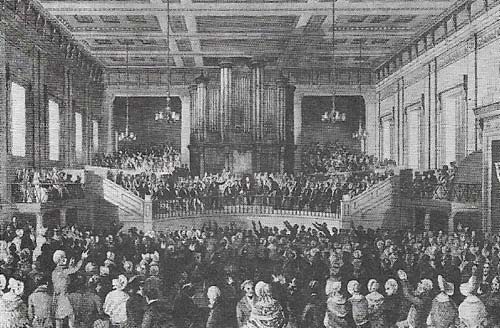
Figure 4. The Anti-Slavery Society, founded in 1823, brought order and direction to the efforts of religious sects and humanitarian reformers who led the early campaign against slavery. The society was one of the first pressure groups to be formed and more than 200 branches were set up. The society produced a lively magazine, and organised lecture tours by fiery campaigners and returned missionaries kept enthusiasm alight.
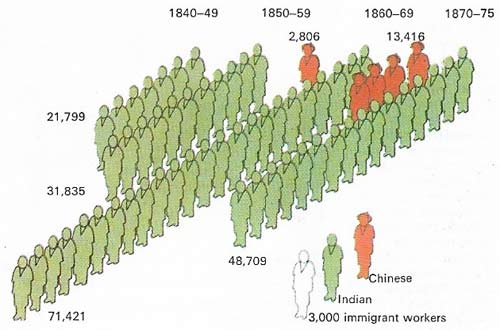
Figure 5. Immigrants came from a variety of places to take up jobs in the West Indies after the abolition of slavery led to a shortage of labor. East Indians were the most numerous, but there were also Africans liberated by the Royal Navy from ships smuggling slaves to Cuba and Brazil; Portuguese from Madeira; Chinese and freed blacks from the United States; and West Indians from overcrowded Barbados and the small islands. The Chinese and Madeirans soon moved from the estates mostly into commerce, while the Africans merged with the Creole population after about a generation.
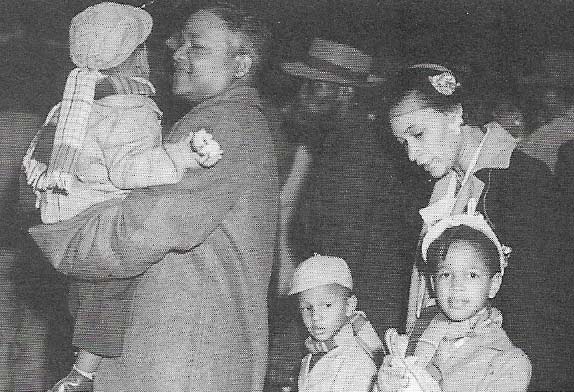
Figure 6. About 115,000 West Indians arrived in Britain in the 1950s. After World War II the West Indies had too few jobs for its expanding population. It became increasingly difficult to migrate, as earlier generations had done, to foreign Caribbean islands or the United States because of new restrictions there. But from the mid-1960s West Indian immigration was reduced by restrictions introduced by the British government.
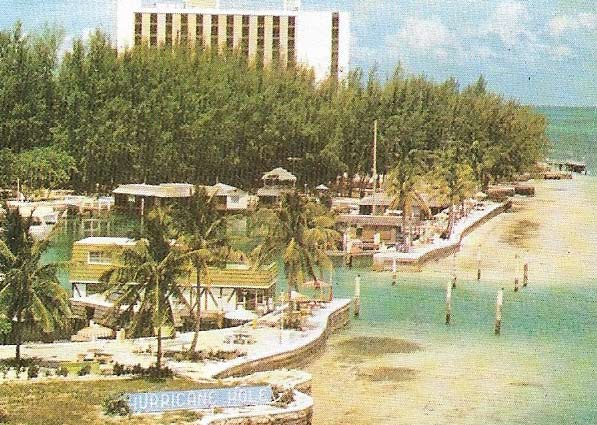
Figure 7. Tourism was seen by West Indian economists and politicians as a way of providing jobs and foreign exchange in the 1950s and 1960s. Their task seemed easier when the Cuban revolution of 1959 barred Havana, the traditional Caribbean playground, to North Americans. Since then beach hotels, usually owned by foreigners, have spread throughout the islands and facilities have been extended to cater for package holidaymakers as well as for the more usual wealthy visitors.
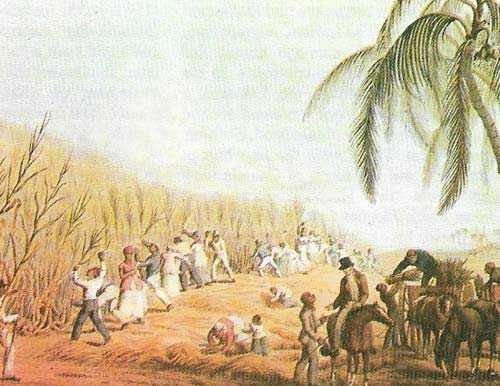
Figure 8. Sugar production is both an agricultural and industrial process. Because the sucrose content declines rapidly, harvested sugar cane must be processed without delay. A sugar mill is therefore usually on the estate or near by. The molasses is separated and used in the manufacture of rum. Today, as for the last three centuries, sugar is the major crop oil the Caribbean.
During the four voyages of Christopher Columbus (c. 1451–1506) to the Caribbean (1492–1504) Spain asserted its sole right to colonize the region. At first this monopoly, sanctioned by the pope, went unchallenged; Spain settled Cuba, Puerto Rico, Jamaica, and Hispaniola (now Haiti and the Dominican Republic). By the 1530s, French, Dutch, and English seamen questioned the notion of the Caribbean as a Spanish domain. They began to trade illegally and attacked Spanish shipping and settlements.
Piracy and colonization
Prominent among the English interlopers were Sir John Hawkins (1532–1595), who made three West Indian voyages (1562–1568) with African slaves to begin England's involvement in the slave trade, and Sir Francis Drake (c. 1540–1596), the most successful raider of all, who sacked Nombre de Dios in Panama (1572) and Santo Domingo in Hispaniola (1585). No attack, however annoying, seriously threatened to undermine Spanish hegemony, but they left a legacy of piracy and buccaneering (Figure 2).
Early 17th-century treaties with a war-weary Spain gave her confident rivals, so they believed, the right to colonize unoccupied islands without fear of molestation by Spain. These islands were in the eastern Caribbean and their fierce Carib inhabitants did not deter the new colonizers. The English settled in St Kitts in 1624 (sharing it with the French until 1713), Barbados (1627), Nevis (1628), Antigua and Montserrat (1632). The French took Martinique and Guadeloupe (1635); the Dutch, Danes, and Brandenburgers settled elsewhere.
These islands had to provide tropical produce for the mother country, a duty they kept until independence. Originally they grew tobacco, cotton and indigo on smallholdings worked by a farmer with a few white indentured servants, often Irishmen. But society changed drastically when Dutch entrepreneurs introduced the colonists to Brazilian techniques of large-scale sugar production using slave labor. By the 1660s lucrative plantation slavery was ousting the small farmer and his indentured servants many of whom emigrated to North America; the West Indian population became predominantly African and the islands were bound to the fortunes of a single crop.
 |
| The plantation or great house where the proprietor or his deputy, the attorney, lived was usually the only substantial building on an estate, apart from the mill. The plantation houses that were built in the 18th century at the height of the West Indian prosperity were often elegant mansions noted for their ostentatious and flamboyant hospitality. They were staffed by numerous house slaves. At a discreet distance from the planter's mansion and hidden from view were the crude huts and barracks that the field slaves retired to at the end of the gruelling day's toil. |
European exploitation
England's capture of Jamaica (1655) (Figure 1) attracted capital and planters to this largest British possession in the West Indies. At the same time the French were infiltrating western Hispaniola. Their new colony, St Dominique, became the world's largest sugar producer until its downfall in the Haitian revolution (1791–1803). These sugar colonies became the most prized imperial possessions in the 18th century. The remaining Windward Islands were settled in that period: Dominica, Grenada and St Vincent by Britain; St Lucia by France. By 1815 Britain had gained St Lucia, Spanish Trinidad and the mainland Dutch colonies of Berbice, Demerara, and Essequibo – the last-named becoming British Guiana (now Guyana) in 1831.
Plantation life was remarkably similar in all sugar colonies. A planter or his deputy, supported by a few white or black overseers, ruled despotically over an enslaved workforce. There were field slaves, house slaves and craftsmen. Some arrived directly from Africa but an increasing proportion were "Creoles", born in the Caribbean. Uneasily in the middle were mulattos (the offspring of one white parent and one black).
Periods of adjustment
Humanitarian pressure (Figure 4) by reformers such as William Wilberforce (1759–1833) and, perhaps, more profitable opportunities elsewhere for British capital led to the ending of the British slave trade in 1807 and of slavery itself in 1833. There was stiff opposition from planters, who already faced competition from Brazil and Cuba and a new and efficient rival, European beet sugar. The planters sought a new source of labor (Figure 5) and finally found it in India. Between 1845 and 1917, 380,000 East Indians, as they are called, went as indentured labor to British Guiana and Trinidad. By 1970 they accounted for 51 percent of the Guyanese population and 38 percent of Trinidad's.
In the late nineteenth century, population pressure mounted as public health measures improved, West Indians began to emigrate. They went to Panama to build the canal and railways, to the plantations of Central America and Cuba, to the oilfields of Venezuela and to the US.
Persistent poverty in the 1930s, made worse by world depression, led to rioting throughout the British West Indies and stimulated nationalist movements (9). After World War II and the granting of universal suffrage the territories moved towards independence. A short-lived federation (1958–1962) broke up through internal rivalries and countries became independent on their own: Jamaica and Trinidad (1962); Barbados and Guyana (1966); and Grenada (1974). The rest are self-governing with some powers still reserved to Britain.
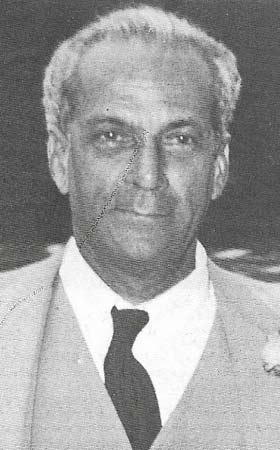 |
Norman Manley, (1893–1969) typified a generation of nationalists who helped their countries to gain independence. Like Eric Williams (1911–1981) of Trinidad and Forbes Burnham (1923–1985) of Guyana, he was educated at an English university. He returned as a barrister to Jamaica where the unrest of the 1930s encouraged him to enter politics. In 1938 he formed the People’s National Party, based on Fabian socialism, while a cousin, Alexander Bustamente, founded the rival Jamaican Labour Party. Since then these parties have been the main forces in Jamaican politics. Manley’s son, Michael (1924–1997), followed him into politics and became Prime Minister of Jamaica in 1972. |
Meanwhile the former British colonies, now members of the Commonwealth, have been redefining their political positions. The sugar-producing nations were members of a cartel, formed to guarantee crop prices. Jamaica, Trinidad and Guyana are also members of the non-aligned nations.
